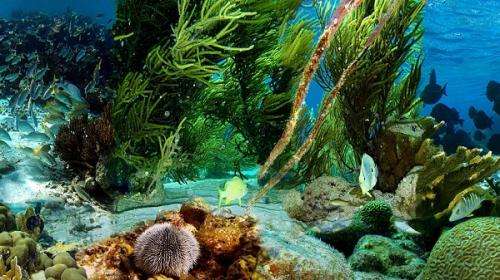Underwater pictures shared innovatively for science collaboration

Marine researchers across Australia can now get a better idea of what's under the surface due to an award-winning project that allows them to classify and share their research pictures online.
It's called CATAMI, short for Collaborative and Automated Tools for the Analysis of Marine Imagery.
CATAMI is an example of science collaboration—it allows researchers to upload their images, name and classify the animals and plants featured in the pictures and make them accessible to other scientists.
And rather than manually score or keep count of the images, much of the work can be automated.
The project recently won a WA Information and Telecommunications Alliance technology award (WAITTA).
"What we tried to do is build a web application that partially automates that process, allowing researchers to go online and annotate that," says Luke Edwards, a CATAMI data adviser based at Edith Cowan University.
"What we're trying to do is make that more efficient and save money."
These days, marine research usually involves enormous amounts of underwater vision and pictures that have to be viewed and annotated.
Before CATAMI, researchers would use their individual systems and formats and spend countless hours assessing pictures.
"They usually get lots of students or post-graduate students to do this work and put them in a little room like a workshop, and they might spend six months annotating this imagery," Mr Edwards says.
All the imagery from around Australia is stored at the Pawsey Centre supercomputing facility in the Perth suburb of Kensington.
Marine species classification streamlined
CATAMI not only makes it easier for researchers to store and access images online, it also helps them name species in a consistent fashion.
One of the major achievements of the project was coming up with a classification system that enables researchers to accurately compare and name species around Australia.
"What we've done is bring the marine community together to come up with one classification scheme that everyone can use," says Mr Edwards.
"By having that scheme in place, we can start doing more continental-scale research so we can start aggregating data from across Australia.
"Whereas traditionally, someone from a marine research centre or university might do their own bit of work and annotate some imagery but then it was very hard for them to share that with anyone else."
CATAMI will also help with the conservation efforts of scientists involved in the National Environmental Research Program that will monitor new federal marine parks.
Provided by Science Network WA




















